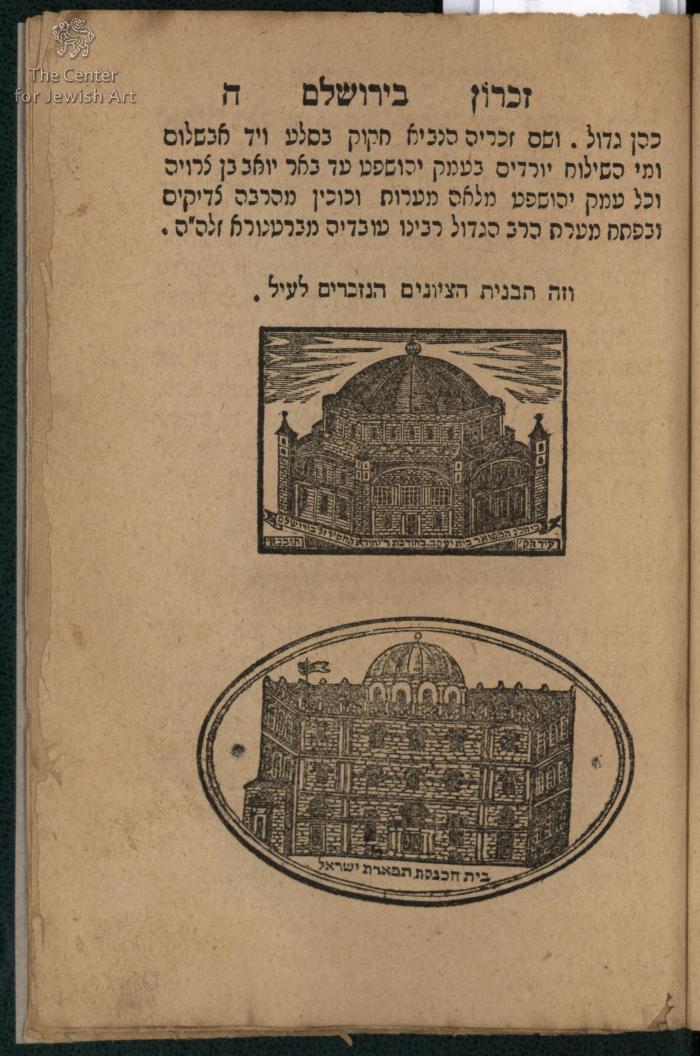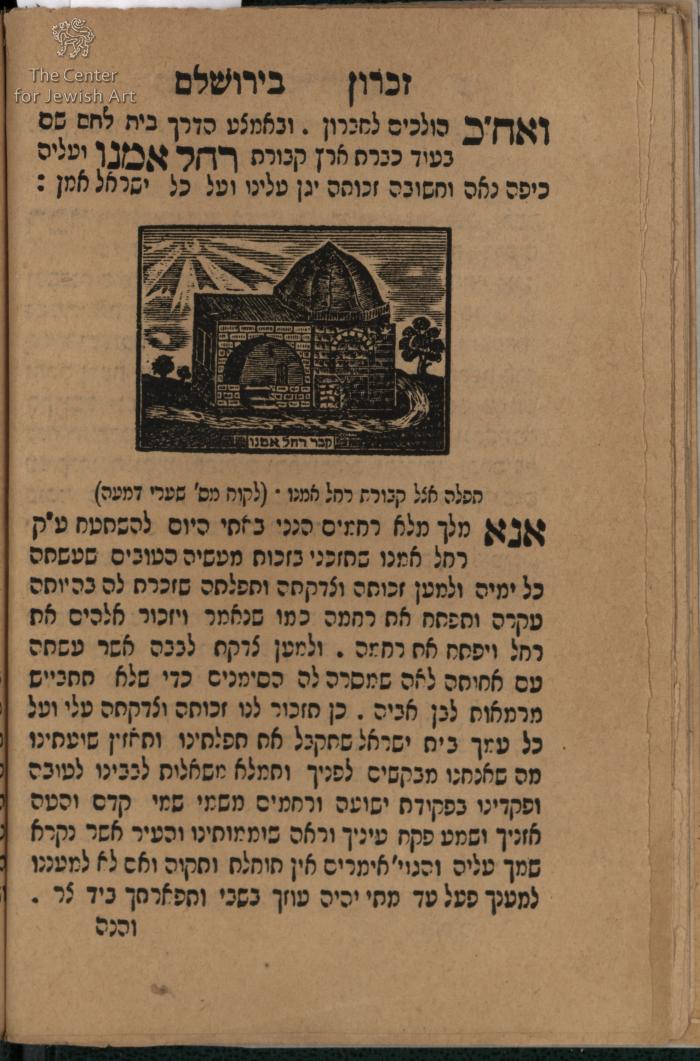Obj. ID: 37909 Zikaron be-Yerushalaim by Yehudah Poliastro, Jerusalem, 1880

sub-set tree:
This text was prepared by William Gross:
As can be seen starting in the 16th century, the most oft-used symbol of Jerusalem in Hebrew printing was the Temple Mount as represented by the Dome of the Rock. In this interesting book, first published in Istanbul in 1742 the image of the Western Wall - the Kotel - appears for the first time in Hebrew printing. The book was published two more times in the 18th century in Fuerth and Amsterdam and yet again in Jerusalem in the 19th. This example is that 19th century Jerusalem print. Only from the middle of the 19th century did the Kotel begin to appear as a symbol of Jerusalem, along with the continued use of the Dome of the Rock until the 1920's. Finally the use of the Kotel replaced completely the use of the image of the Dome of the Rock for Jewish purposes, often evolving into quite elaborate images. But the beginning of this most popular image today is rooted in the simple woodcuts shown in these three 18th century books. The text of the book concerns special prayers to be recited at the Holy Places in Eretz Israel.
This fourth edition, after Kushta, Amsterdam and Fuerth. contains many more illustrations and by more modern techniques than the previous woodcuts that were used in the first three editions.









